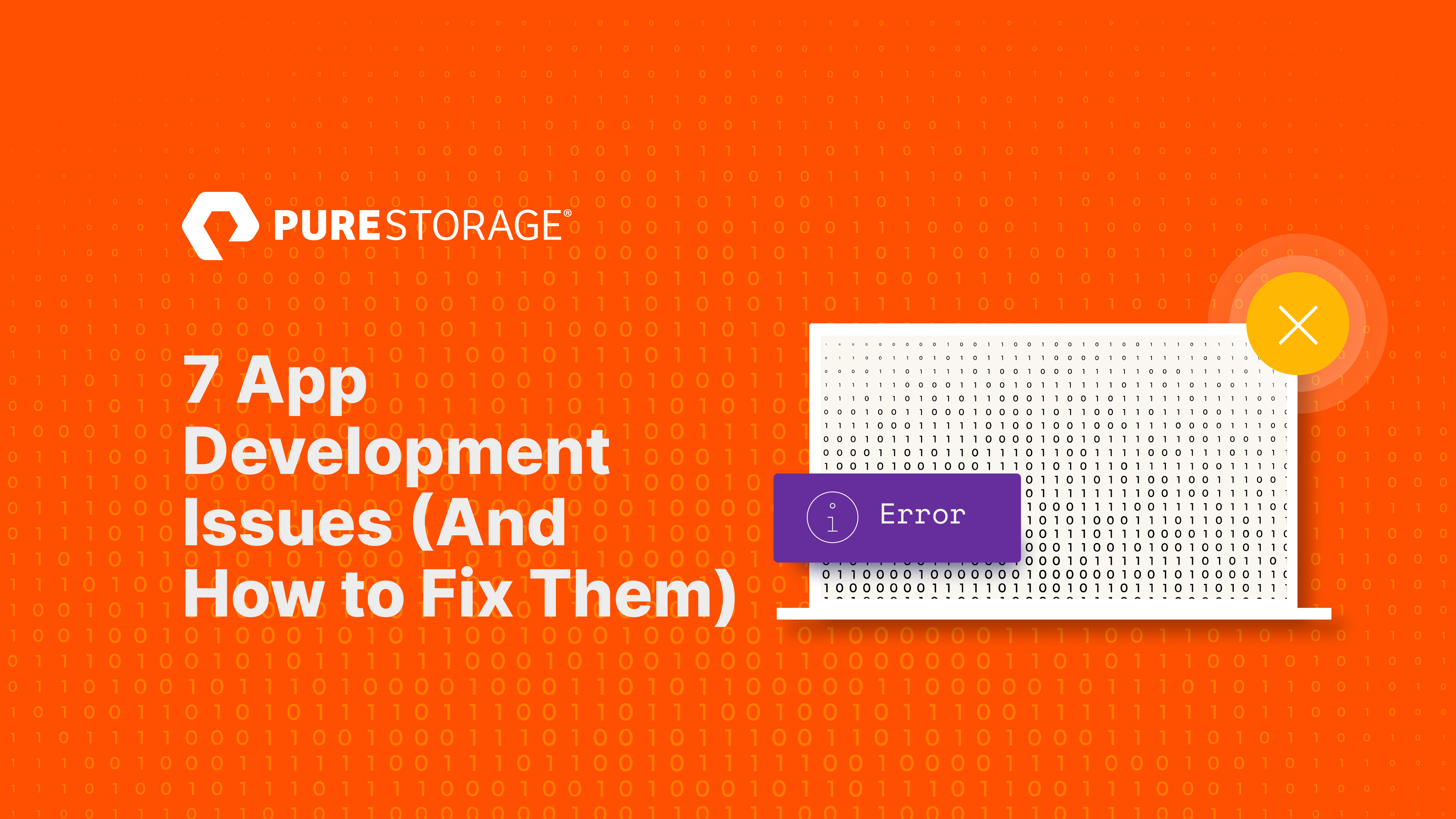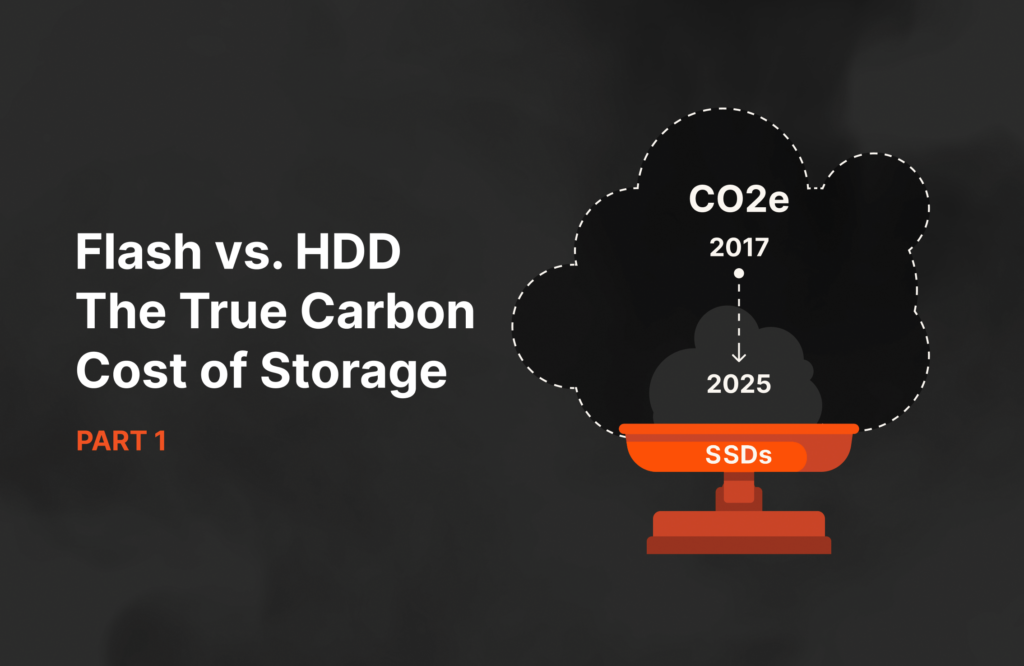What happens when you build modern applications but leave legacy storage to do the heavy lifting? According to a survey of 200 IT professionals, 72% of respondents realize storage can affect the performance of their apps and app development altogether. Yet, 65% admit their storage is too old to handle some of these new workloads. Does that sound familiar?
Storage technology is no longer just the storage admin’s problem. As an app owner, your storage solution can be a bottleneck, or it can be an accelerant. If you’ve run into any of the following, it might be time to ask: Is your storage holding you back?
“Going between on-prem and the cloud is still tricky.”
The cloud is a major catalyst for app development acceleration and an integral component to many broader modernization strategies. A 451 Research survey indicates that cloud storage adoption is on the rise to enable the next-gen applications, innovative microservices, and algorithms that developers want to leverage most. Nearly one-third of respondents use the cloud to meet modern app requirements. But what about the state of data in this scenario?
The same survey shows that modern app development teams move data bidirectionally to and from cloud environments on a daily basis. In 29% of cases, this happens continually for apps that leverage streaming data. That’s pretty high-traffic. If you can’t easily migrate data—something legacy storage is not great at—you’ll end up siloed again.
To get the data mobility you need to run apps anywhere, you’ll want a consistent storage solution so private- and public-cloud data storage aren’t separate. A unified storage environment helps apps speak the same language, no matter where they’re deployed. Need to quickly spin up a cloud-based instance for testing, QA, or app development? Get storage that makes it quick and easy to clone on-prem storage to the cloud.
“We want to embrace containers, but we don’t feel ready.”
Virtualization and containers are a major app development accelerant. Why? They reduce the time it takes to deploy servers from months to minutes, let you update code without redeploying an entire app, and they’re portable between platforms. But there are some tricky aspects to containers—most notably when it comes to managing persistent storage for stateful apps.
Containers are, by virtue, isolated from their underlying environments (including databases). When they rely on data that can’t be migrated easily, you run into bottlenecks that may very well cancel out the benefits. There are a few ways to address this. First, you could be selective with the apps you choose to containerize. Capitalize on the portability and ease of deployment rather than relying on enterprise features. Second, adopt a smarter underlying persistent storage solution. This should be able to plug into container orchestrators for easy management, as well.
Note: Containers are often leveraged for object storage, which makes that data shareable between services and apps. Go this route and you’ve got a portable data repository that almost any public- or private-cloud service can access via API.
“We still have silos in our DevOps processes.”
The very nature of DevOps is to break down silos to speed up product delivery—a big part of which is adopting self-service capabilities. The most popular among highly evolved DevOps teams are continuous integration (CI)/continuous development (CD) workflows, public-cloud infrastructure, and database provisioning. This says advanced DevOps teams are getting more hands-on with database administration to provision what they need, when they need it—but making database provisioning self-service requires simplicity from storage.
Another major challenge to DevOps efficiency is a tightly coupled application architecture. Complex dependencies, siloed data storage, and restrictive, vendor-locked SLAs can hold teams back. If you’re trying to be more modular and agile with legacy, purpose-built storage, you’re going to feel the pinch. To speed delivery and give teams the ability to experiment and work at their own pace, standardize data storage and back workflows with consolidated data storage that’s cloud-native and highly available—and simple enough for almost anyone to operate.
“Our mission-critical apps need better fast file and object storage.”
Whether apps are processing large volumes of unstructured data for AI applications or extracting insights from multiple data sources across a fleet of Internet of Things (IoT) devices, fast file and object storage is key. It shouldn’t be reserved for archival or non-mission-critical data; it’s needed to build performant apps that can access objects directly—and quickly.
If you’ve struggled to get the performance your app development needs from public, cloud-based object storage, you might have considered moving object storage back on-prem to boost that performance. But, careful you don’t make sacrifices to compatibility and mobility. Without unified fast file and object storage, you’re going to have to make tradeoffs.
“Our copy/clone process is too slow to pull data for integrations.”
Significant delays in copy/clone processes can make it difficult to leverage data for CI/CD pipelines, which are critical to DevOps testing workflows. If it takes a week or more to execute a copy/clone process, that’s too slow to keep up.
If you leverage AWS or Azure for automated-testing environments, you’ll likely want your storage platform to be able to instantly create that clone, no matter where it’s located—saving you and your team valuable time and resources. When you need a data-replication process that moves as fast as you do, modern flash storage with copy automation tools (CATs) allows you to clone production databases in minutes and simplify how you provision clones for automated-testing environments, all without eating up TBs of space.
“We could be using backups for sandboxes, but they use too many resources.”
Backups and snapshots of data sets can be gold mines—especially for app developers. Consider what you could do with a sandbox of a production environment that’s as close to live as you can get. You could feature flag risk-free, run a range of tests with more accuracy, and experiment without the limitations of a staging environment.
Traditional backup solutions are nearly off-limits to DevOps scenarios, which move fast and have tight iterative loops. Accommodating the space that traditional backups often require makes them impractical. That’s a storage problem, again—and one that modern backup appliances can solve for.
“We’ve missed SLAs because of data-access issues.”
Whether it’s between you and your customers or internally between teams, an SLA is a contract that can’t be broken. If data isn’t accessible, service disruption can mean a missed SLA and subsequent penalties. For example, if within your SLA you promise 99.9999% uptime and availability, you should be able to measure and support that. When it comes to data, that means having a storage solution that is robust and fast enough to deliver on that SLA every time.
When storage has become a bottleneck and data can’t be accessed on-demand, it just became your problem. Rapid recovery is critical to heading off downtime and that requires having a storage solution that can deliver a backup with production levels.
If you’re modernizing your app, you need to modernize your database technology stack
IDC industry analysts found that 65% of enterprises want to modernize legacy systems through 2023. That means adopting app-accelerating advancements, such as storage-as-code, public cloud, automation, virtualization, and containers as a service. For these types of modern technologies, you simply can’t afford to expect legacy storage to carry the load.
If any of these scenarios struck you as familiar, take note: It’s time to rethink your storage. You won’t just head off these issues in the future—you’ll enable breakthroughs.
![]()
![]()




